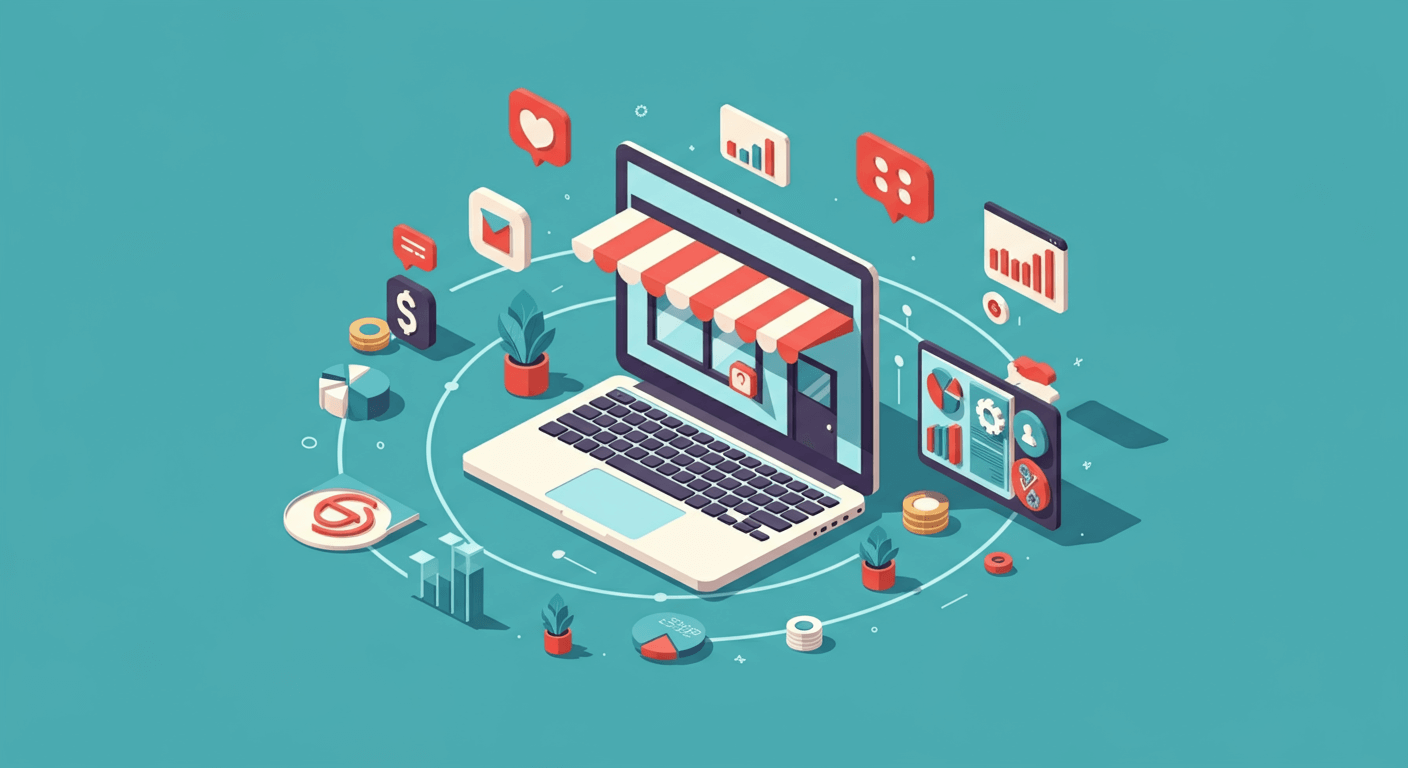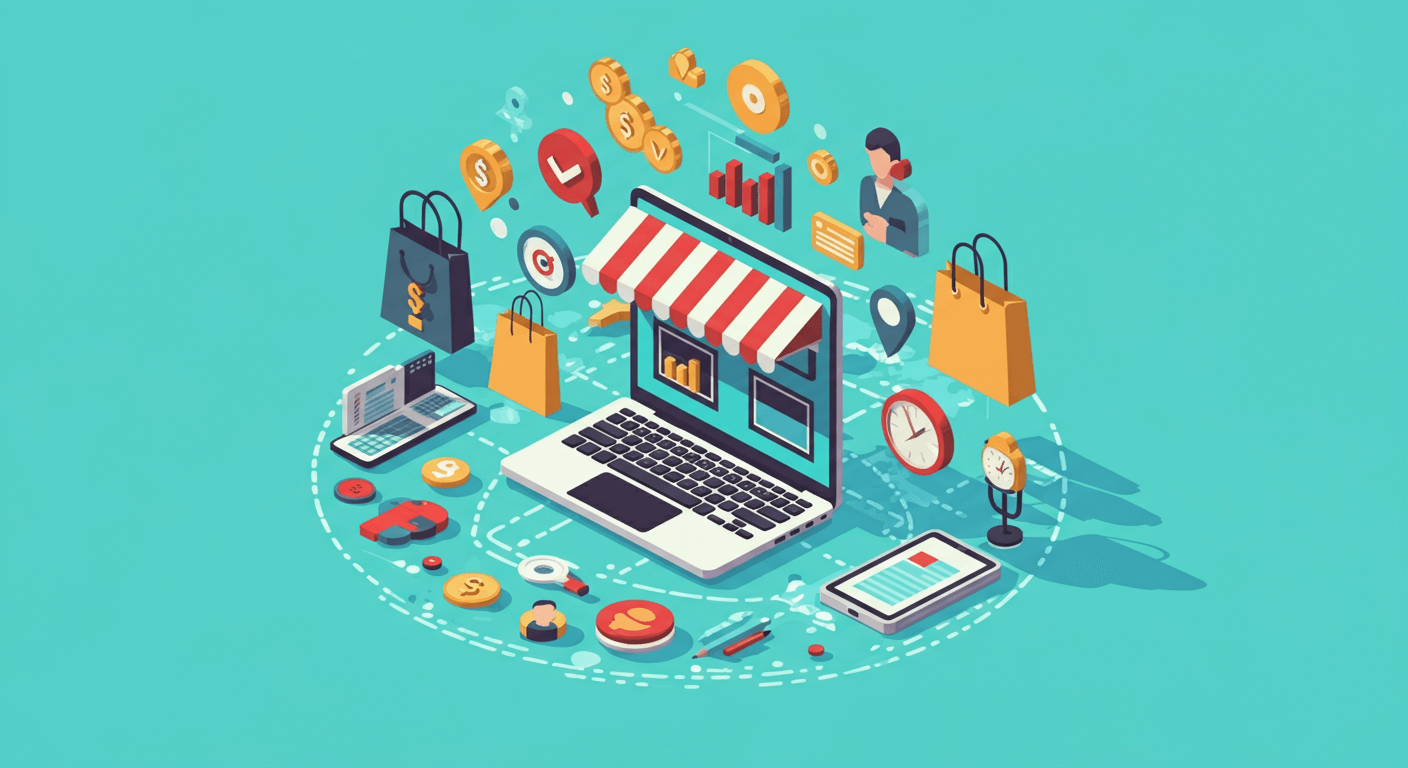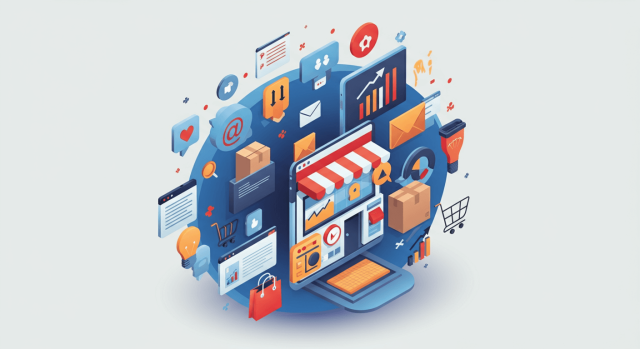E-commerce businesses face an uphill battle. With over 26 million online stores worldwide competing for attention, standing out requires more than just great products and competitive prices. Traditional advertising methods are becoming increasingly expensive, with customer acquisition costs rising across most industries.
This is where inbound marketing shines. Rather than interrupting potential customers with ads, inbound marketing attracts them by providing valuable content and experiences tailored to their needs. For e-commerce businesses, this approach can dramatically reduce acquisition costs while building lasting customer relationships.
What is Inbound Marketing?

Inbound marketing is a methodology that attracts customers by creating valuable content and experiences tailored to their specific needs. Unlike outbound marketing, which pushes messages to a broad audience, inbound marketing pulls qualified prospects to your business naturally.
The inbound methodology consists of four key stages:
Attract: Draw in the right people with valuable content that addresses their pain points and interests.
Convert: Turn visitors into leads by offering something valuable in exchange for their contact information.
Close: Transform leads into customers through targeted nurturing and sales efforts.
Delight: Provide exceptional experiences that turn customers into promoters of your brand.
For e-commerce businesses, this approach is particularly powerful because online shoppers are already conducting research before making purchases. By providing helpful content throughout their buyer’s journey, you can guide them naturally toward your products.
Why Inbound Marketing Works for E-commerce
E-commerce businesses are uniquely positioned to benefit from inbound marketing for several reasons:
Cost-effective customer acquisition: Inbound marketing costs 62% less per lead than traditional outbound marketing, making it ideal for businesses looking to scale efficiently.
Better targeting: Content marketing allows you to attract people who are already interested in your product category, leading to higher-quality leads and better conversion rates.
Long-term value: Unlike paid advertising that stops working when you stop paying, quality content continues attracting customers months or even years after publication.
Trust building: Educational content positions your brand as an authority, building trust with potential customers before they make purchasing decisions.
Measurable ROI: Digital marketing tools make it easy to track which content drives traffic, leads, and sales, allowing for data-driven optimization.
Core Components of E-commerce Inbound Marketing
Content Marketing
Content marketing forms the foundation of any successful inbound strategy. For e-commerce businesses, effective content addresses the questions and challenges your target customers face throughout their buying journey.
Educational blog posts should focus on solving problems related to your products. If you sell fitness equipment, create content about workout routines, nutrition tips, or home gym setup guides. This attracts people interested in fitness who might eventually need your products.
Product guides and comparisons help customers make informed decisions while showcasing your expertise. Detailed buying guides not only attract search traffic but also reduce customer service inquiries and return rates.
User-generated content like customer reviews, photos, and testimonials builds social proof while providing fresh content for your site. Encourage customers to share their experiences and feature the best submissions across your marketing channels.
Search Engine Optimization (SEO)
SEO ensures your content gets found by people searching for solutions you provide. E-commerce SEO requires a multi-faceted approach:
Keyword research should focus on both product-related terms and informational queries your customers search for. Use tools like Google Keyword Planner or SEMrush to identify high-volume, low-competition opportunities.
On-page optimization involves optimizing product pages, category pages, and blog content for relevant keywords. This includes optimizing titles, meta descriptions, headers, and product descriptions.
Technical SEO ensures your site loads quickly, works well on mobile devices, and provides a smooth user experience. Site speed and mobile-friendliness directly impact both search rankings and conversion rates.
Social Media Marketing
Social media platforms provide opportunities to share your content, engage with customers, and build brand awareness. Each platform serves different purposes:
Instagram and Pinterest work well for visually appealing products, allowing you to showcase items in use and lifestyle contexts.
Facebook offers robust advertising options and community-building features through groups and business pages.
LinkedIn can be valuable for B2B e-commerce businesses or those targeting professional audiences.
TikTok and YouTube provide opportunities for video content that demonstrates products and builds personality around your brand.
Email Marketing
Email remains one of the highest-ROI marketing channels for e-commerce businesses. An effective email strategy includes:
Welcome series for new subscribers that introduce your brand, set expectations, and provide immediate value.
Educational newsletters that share helpful content, not just promotional messages. Mix product updates with useful tips, industry news, and customer stories.
Abandoned cart emails that remind customers about items they left behind and address common objections or concerns.
Post-purchase sequences that help customers get the most from their purchases while encouraging reviews and repeat purchases.
Implementing Your Inbound Strategy

Define Your Buyer Personas
Successful inbound marketing starts with understanding your ideal customers. Create detailed buyer personas that include:
- Demographics and basic information
- Goals and challenges they face
- How they research and make purchasing decisions
- Preferred communication channels and content types
- Common objections to purchasing
Use customer surveys, interviews, and analytics data to build accurate personas. Most e-commerce businesses benefit from 2-3 detailed personas rather than trying to target everyone.
Map Content to the Buyer’s Journey
Create content that serves customers at each stage of their journey:
Awareness stage: Customers realize they have a problem or need. Create educational content that helps them understand and define their challenge.
Consideration stage: Customers are researching solutions. Provide comparison guides, product reviews, and detailed information that helps them evaluate options.
Decision stage: Customers are ready to purchase. Offer product demos, free trials, consultations, or detailed specs that help them choose your solution.
Post-purchase: Customers need support and may consider additional purchases. Provide setup guides, tips for getting better results, and recommendations for complementary products.
Create a Content Calendar
Plan your content creation and distribution with a calendar that ensures consistent publishing. Include:
- Blog post topics and publication dates
- Social media posts and campaigns
- Email newsletter content
- Seasonal promotions and product launches
- Key industry events or holidays relevant to your audience
Aim for consistency rather than overwhelming frequency. It’s better to publish one high-quality blog post per week than to post daily with mediocre content.
Set Up Conversion Opportunities
Transform your content into lead generation by offering valuable resources in exchange for contact information:
Lead magnets like buying guides, checklists, or exclusive discounts encourage email signups.
Gated content, such as comprehensive guides or webinars, can capture leads ready for more detailed information.
Free trials or samples work well for products where customers benefit from hands-on experience before purchasing.
Make sure your conversion opportunities match the content topic and provide genuine value to justify the information exchange.
Measuring Success
Track key metrics to understand what’s working and where to focus your efforts:
Traffic metrics: Monitor organic search traffic, social media referrals, and direct traffic to understand how people find your content.
Engagement metrics: Look at time on page, bounce rate, and social shares to gauge content quality and relevance.
Lead generation: Track email signups, content downloads, and other conversion actions to measure how well your content attracts potential customers.
Sales attribution: Use analytics tools to understand which content pieces and channels contribute to actual sales, not just traffic.
Customer lifetime value: Monitor how inbound-acquired customers compare to those from other channels in terms of purchase value and retention.
Advanced Inbound Tactics
Once you’ve mastered the basics, consider these advanced strategies:
Marketing automation can nurture leads with personalized content based on their behavior and interests, improving conversion rates while saving time.
Retargeting campaigns can bring back website visitors who didn’t convert initially, using different messages for different pages they visited.
Influencer partnerships can amplify your content reach and build credibility with new audiences.
Community building through forums, Facebook groups, or branded platforms can create ongoing engagement and customer loyalty.
Your Next Steps
Inbound marketing for e-commerce requires patience and consistency, but the results compound over time. Start by choosing one or two channels where your customers are most active, then expand as you see success.
Begin with a simple content calendar focused on your customers’ most common questions and challenges. Create helpful, genuine content that serves their needs first, with subtle product connections. As you build trust and authority, you’ll find customers naturally gravitating toward your solutions.
Remember that inbound marketing is a marathon, not a sprint. Focus on providing consistent value, and you’ll build a sustainable system that attracts qualified customers while reducing your dependence on paid advertising.
Meta data
Meta title
Meta description




